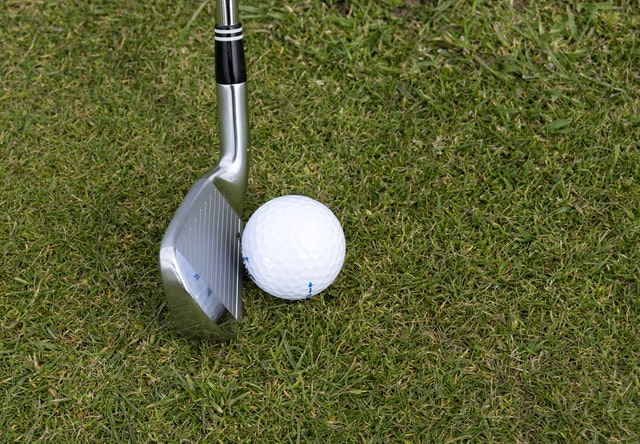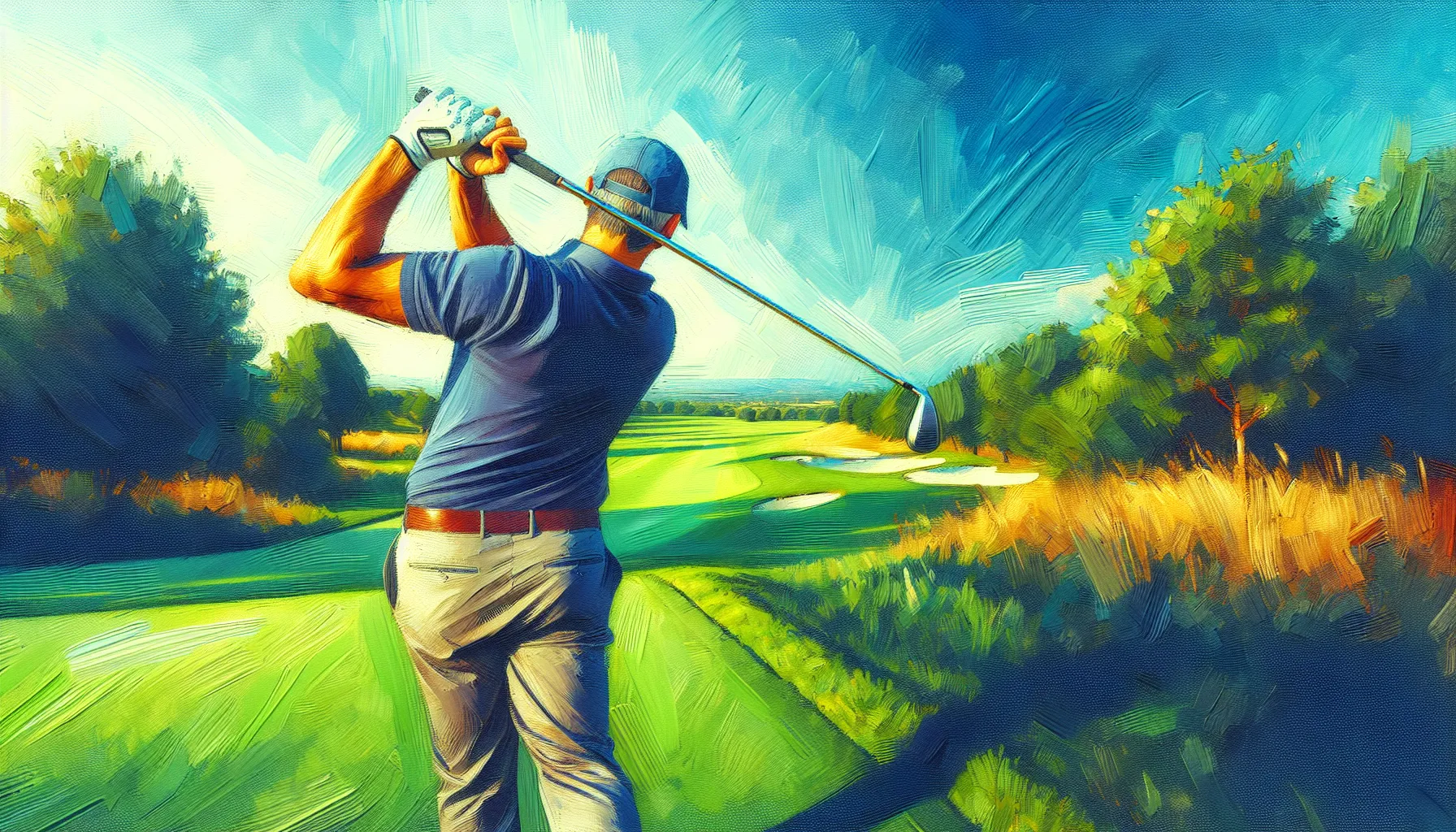Mastering the Drive: How to Drive a Golf Ball Like a Pro
Do you struggle with driving the golf ball consistently? You're not alone. In this article, discover the secrets to driving a golf ball like a pro, including actionable tips on setup, swing mechanics, and follow-through. Whether you're looking to add distance to your drives or correct common mistakes, our comprehensive guide has you covered. Don't miss the key takeaways and FAQ section at the end for quick insights!
Do you often find yourself on the first tee, heart pounding, palms sweaty, dreading the moment your drive slices off into the rough or, worse, dribbles pathetically just a few yards away? I’ve been there. It’s a nightmare scenario that every golfer fears. The pressure is immense, and the humiliation when things go wrong is all too real.
But what if I told you there’s a way to transform that fear into confidence? Imagine standing on the tee box, feeling the weight of the club in your hands, knowing you’re about to crush your drive straight down the fairway. This isn’t some far-fetched fantasy; it’s a reality you can achieve with the right techniques and mindset.
In this article, I’m going to share the secrets to driving a golf ball with power and precision. We’ll dive into the nitty-gritty of setup, swing mechanics, and follow-through. By the end, you’ll have the knowledge and confidence to drive like a pro, leaving your buddies in awe and giving you those well-deserved bragging rights in the clubhouse.
 Experience the perfect drive on a sunny day.
Experience the perfect drive on a sunny day.Master Driving a Golf Ball: Tips for Power and Precision
For years, I struggled with my golf game, especially when it came to driving the ball. Every time I stepped onto the tee, my heart raced with the fear of slicing or hitting a weak shot. My inconsistent drives were not only frustrating but also humiliating, especially when playing with friends who seemed to effortlessly hit long, straight drives.
Determined to improve, I began researching and practicing every tip I could find. I spent countless hours at the driving range, watched numerous tutorial videos, and even took a few lessons. Despite my efforts, I saw little improvement and often felt overwhelmed by the conflicting advice from different sources.
One day, while browsing online, I stumbled upon a golf forum where a seasoned golfer shared a simple, structured approach to driving the ball. This method focused on mastering the basics of setup, swing mechanics, and follow-through, rather than trying to implement every tip at once. Intrigued, I decided to give it a try, focusing on one aspect of my swing at a time.
I adopted this new framework, breaking down my practice sessions into specific drills targeting my setup, backswing, downswing, and follow-through. I used alignment sticks to ensure proper stance and grip, and practiced with a weighted club to build strength and improve my swing speed. I also recorded my swings to analyze and correct my form.
Gradually, my drives began to improve. I started hitting the ball longer and straighter, and my confidence grew with each successful shot. My friends were amazed at the transformation, often asking for tips and advice. The structured approach had not only improved my driving but also reignited my passion for golf. Now, every time I step onto the tee, I feel excited and confident, ready to impress with a powerful drive down the fairway.
"Success is no accident. It is hard work, perseverance, learning, studying, sacrifice and most of all, love of what you are doing or learning to do." - Pelé
The Perfect Setup
The foundation of a great drive starts long before you even swing the club. A solid setup is crucial for achieving the power and accuracy you desire. Here’s how to set up for success:
1. Tee Height: The ball should be teed up so that half of it sits above the top edge of your driver’s face. This height allows for optimal contact and lift.
2. Stance and Alignment: Position the ball just inside your lead heel. Your feet should be shoulder-width apart, giving you a stable base for your swing. Ensure your shoulders, hips, and feet are parallel to your target line.
3. Grip: A proper grip is essential. Hold the club with a relaxed grip, avoiding any tension in your hands and arms. Your lead hand should guide the club, while your trailing hand supports and stabilizes the swing.
4. Posture: Bend slightly at your hips, keeping your back straight and your knees flexed. Your weight should be balanced on the balls of your feet, not your heels, to maintain agility and power during your swing.
Tips for Improving Your Setup:
- Practice with an alignment stick to ensure your feet, hips, and shoulders are aligned correctly.
- Check your grip pressure by holding the club lightly, like you’re holding a small bird – firm enough to keep it secure but gentle enough not to crush it.
Common Mistakes to Avoid:
- Too much tension in your grip or body can lead to stiff, awkward swings.
- Poor alignment can cause inconsistent shots, leading to slices or hooks.
The Backswing and Downswing
Now that we’ve got the setup down, let’s talk about the swing itself. The backswing and downswing are where the magic happens. Here’s how to perfect each phase:
1. The Backswing: Your backswing sets the stage for a powerful drive. Keep your left arm straight (right arm for left-handed golfers) and rotate your shoulders, not just your arms. Shift your weight to your back foot while keeping your club low and wide.
2. The Downswing: The transition from backswing to downswing should be smooth and controlled. Start the downswing with your lower body, shifting your weight to your front foot. Rotate your hips and torso towards the target while keeping your head still and eyes on the ball. Ensure your clubface is square to the target line and your hands lead the clubhead at impact.
Tips for Improving Your Swing:
- Use a golf glove under your armpit during practice to keep your arms snug and prevent the “chicken wing” that can ruin your swing.
- Maintain a smooth tempo throughout your swing, avoiding any sudden jerks or rushes.
Common Mistakes to Avoid:
- Starting the downswing with your arms instead of your lower body can lead to weak, off-target shots.
- Lifting your head during the swing can cause you to miss the ball or make poor contact.
The Follow-Through
A proper follow-through is the cherry on top of a perfect drive. Here’s how to finish strong:
1. Body Rotation: Ensure your body continues rotating through the shot, with your weight shifting onto your lead foot. Your chest should face the target, and your club should point towards the sky.
2. Relaxed Arms and Hands: Allow your arms and hands to extend naturally towards the target, maintaining a relaxed and fluid motion.
3. Balanced Finish: Maintain your balance throughout the swing and finish in a stable position. Your back heel should be lifted, and your weight should be firmly on your front foot.
Tips for a Perfect Follow-Through:
- Practice full rotations to ensure your body follows through correctly. A good follow-through indicates a well-executed swing.
- Focus on balance by holding your finish position for a few seconds after each swing.
Common Mistakes to Avoid:
- Stopping your swing too early can lead to weak, inconsistent drives.
- Failing to rotate fully can cause you to lose power and accuracy.
 Master your drive with a scenic golf course backdrop.
Master your drive with a scenic golf course backdrop.Common Mistakes and How to Fix Them
Even with the best intentions, mistakes happen. Here are some common driving errors and how to correct them:
1. Open Clubface: Ensure your grip is strong enough to keep the clubface square at impact. Adjust your grip by turning your hands slightly towards the target line.
2. Swing Path Issues: Correct your swing path by focusing on your takeaway and ensuring your club stays on the ideal swing plane. Use alignment aids to practice a straight path.
3. Narrow Stance: Widen your stance to accommodate the longer swing arc of your driver. This helps with stability and control.
4. Ball Position: Place the ball forward in your stance to hit it on the upswing, increasing distance and reducing spin.
Tips for Avoiding Mistakes:
- Regular practice with alignment aids can help correct stance and swing path issues.
- Consistent grip checks ensure your clubface remains square at impact.
Practice Drills:
- Alignment Stick Drill: Use alignment sticks to check your stance and swing path.
- Slow Motion Swings: Practice swings in slow motion to focus on form and technique.
 Capture the power of a perfect golf swing.
Capture the power of a perfect golf swing.Advanced Tips for Extra Distance
Ready to take your drive to the next level? Here are some advanced tips to add extra yards to your shots:
1. Swing Speed: Increase your swing speed by practicing with weighted clubs or resistance bands. This builds strength and speed in your swing muscles.
2. Launch Angle: Optimize your launch angle by adjusting your tee height and ball position. Higher launch angles can lead to longer carries and more distance.
3. Club Selection: Experiment with different drivers to find one that suits your swing style and maximizes your distance.
Tips for Maximizing Distance:
- Use a launch monitor to analyze your swing and make data-driven adjustments.
- Work on flexibility and strength to improve your overall swing mechanics and power.
Common Pitfalls to Avoid:
- Over-swinging can lead to loss of control and accuracy. Focus on smooth, controlled swings.
- Ignoring short game practice: While driving is important, don’t neglect your short game. A balanced approach to practice leads to better overall performance.
 Start your day with a powerful drive at sunrise.
Start your day with a powerful drive at sunrise.Key Takeaways
Here are the core actionable takeaways you can use immediately to improve your drive:
- Tee Height: It ensures optimal contact and lift so you can achieve consistent ball flight and distance, which means minimizing mishits and maximizing your drive distance.
- Stance and Alignment: It provides a stable base and proper aim so you can direct the ball accurately, which means fewer slices and hooks.
- Grip: It ensures control and power so you can maintain a steady swing, which means more consistent and powerful drives.
- Posture: It balances weight distribution so you can maintain agility and power, which means reducing the risk of injury and improving consistency.
- Backswing Technique: It sets the stage for a powerful drive so you can generate maximum power, which means longer and straighter shots.
- Downswing Execution: It transitions smoothly for controlled power so you can hit the ball with precision, which means avoiding weak, off-target shots.
- Follow-Through: It completes the swing with balance and rotation so you can ensure a strong finish, which means maintaining accuracy and power.
- Fix Common Mistakes: Regularly practice with alignment aids and check your grip to correct common errors, which means improving your overall driving performance.
- Advanced Tips: Increase swing speed and optimize launch angle to add extra yards, which means achieving longer drives with better accuracy.
Are you ready to get started?
FAQ: Everything You Need to Know About How to Drive Golf
How do I drive a golf ball straight?
How do I drive a golf ball straight?
Driving a golf ball straight requires proper alignment, a consistent swing path, and ensuring your clubface is square at impact. Focus on your stance, grip, and maintaining a smooth tempo throughout your swing.
How can I increase my driving distance?
How can I increase my driving distance?
Increasing driving distance involves improving your swing speed, optimizing your launch angle, and ensuring solid contact with the ball. Practice with weighted clubs and use a launch monitor to make data-driven adjustments.
What is the best stance for driving a golf ball?
What is the best stance for driving a golf ball?
The best stance for driving a golf ball is a shoulder-width stance with the ball positioned just inside your lead heel. This provides a stable base for a powerful and accurate swing.
How do I correct a slice when driving?
How do I correct a slice when driving?
To correct a slice, check your grip to ensure it's not too weak, and focus on a proper swing path. Ensure your clubface is square at impact and practice drills that promote an inside-out swing path.
What is the proper tee height for driving?
What is the proper tee height for driving?
The proper tee height for driving is when the ball is teed up so that half of it sits above the top edge of your driver’s face. This helps you achieve optimal contact and lift.
How do I improve my backswing for driving?
How do I improve my backswing for driving?
Improve your backswing by keeping your left arm straight (right arm for left-handed golfers), rotating your shoulders, and shifting your weight to your back foot. Keep the club low and wide during the takeaway.
How do I maintain balance during my golf swing?
How do I maintain balance during my golf swing?
Maintaining balance during your golf swing involves proper weight distribution, a stable stance, and a smooth tempo. Focus on keeping your weight centered on the balls of your feet and avoid swaying.
You're probably thinking you need to be physically strong to drive the ball far, right?
You're probably thinking you need to be physically strong to drive the ball far, right?
Well, actually, driving distance is more about technique and swing mechanics than raw strength. Proper form and a smooth swing can significantly increase your distance.
How can I practice driving a golf ball at home?
How can I practice driving a golf ball at home?
You can practice driving a golf ball at home using a net and practice mat. Focus on your setup, swing mechanics, and follow-through. Using swing trainers and alignment aids can also help improve your technique.
You're probably thinking you need expensive equipment to improve your drive, right?
You're probably thinking you need expensive equipment to improve your drive, right?
Well, while good equipment helps, improving your driving technique through practice and proper instruction is far more important. You can make significant gains without breaking the bank.
What are common mistakes to avoid when driving a golf ball?
What are common mistakes to avoid when driving a golf ball?
Common mistakes include an improper grip, poor alignment, and a rushed swing. Ensure your setup is correct, practice a smooth tempo, and avoid lifting your head during the swing.
You're probably thinking it's too late to improve your driving skills, right?
You're probably thinking it's too late to improve your driving skills, right?
Well, no matter your age or skill level, you can always improve your driving with the right techniques and consistent practice. Many golfers see improvements even after years of playing.
How do I know if my grip is correct for driving?
How do I know if my grip is correct for driving?
A correct grip for driving ensures control and power. Your grip should be firm but not tense. Check that your hands are positioned so that your lead hand guides the club and your trailing hand supports it.




















